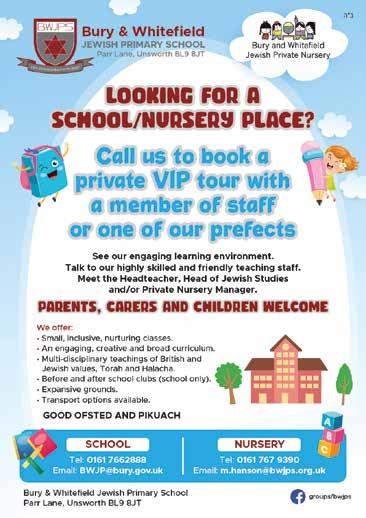
2 minute read
Snap Happy
Equipment
You don’t need to have the latest and greatest camera and lens to get started in photography. Cameras have been capable of producing exceptional images for decades now, so unless you have a very specific need that can only be fulfilled with the latest tech, chances are an older (and cheaper) camera will be just fine.
That said, it is also true that some cameras are just better than others, and the same applies to lenses. In the last few years, there has been a major shift from DSLR cameras to mirrorless cameras, and the difference in capabilities between them is quite vast. So, if you can afford it, mirrorless is the future. But if you’re on a budget, a solid DSLR will be more than adequate. In terms of lenses, a great starting point would be a 50mm f1.8 – it’s one of the cheapest lenses around, but still produces really great quality images.
Rules of composition
One of my favourite phrases is ‘learn the rules like a pro, so you can break them like an artist’. But all too often, photographers justify poorly taken pictures by saying, ‘Oh, I just like to break the rules.’ Breaking rules should be done consciously, and with purpose and intent.
The ‘rule of thirds’ is perhaps the most well-known rule of composition, whereby the subject is placed a third of the way across the scene, and a third of the way up or down it. Another style of composition is symmetry, which can take a surprising variety of forms in an image.
Free Online Photography Lessons
These days, the internet provides a wealth of photographic knowledge completely free, so whatever it is you want to learn, you’ll be able to find it online. YouTube tutorials in particular can guide you through pretty much every single aspect of photography, often with videos specific to your camera brand.
That’s not to say there isn’t value in attending workshops and learning from professionals, but I’d argue they are generally more suited to the intermediate photographers who want specific guidance, rather than beginners looking to learn the fundamentals.
Get off auto
There are no two ways about it, if you really want to learn to take better photographs, you have to stop using the fully automatic feature. This can seem daunting at first, but there’s nothing quite like diving into the deep end headfirst to learn to swim.
When I bought my very first DSLR, I refused to use the fully auto feature, and it was the best decision for me, forcing me to really think about the settings I was using, and why. The key to getting off fully auto is learning about - and understanding - the exposure triangle, which is the basis of all photography. There are three elements that all work together to achieve an exposure, shutter speed, aperture, and ISO. Understanding how each one affects an image, and understanding how they work together, will put the control completely in your hands.
Don’t rush
Everyone wants to take great pictures, and in today’s fast-paced world, most people want great results immediately. But with photography, there simply isn’t one trick or fix that will transform your images into world-class artwork (despite the promises of thousands of online photography adverts). Rather, photography is about making lots of smaller adjustments to improve your results.
Practice
You can read all the theory you want, you can admire other people’s work, and you can attend so many workshops, but nothing will improve your photography more than just practicing. Famous French photographer Henri Cartier-Bresson said: “Your first 10,000 photographs are your worst”, and he was right, so go out, take lots of pictures, make mistakes, learn from them, improve, and enjoy the process!

See more photos on pages 6, 13, 16, 23, 33, 40 and 56







